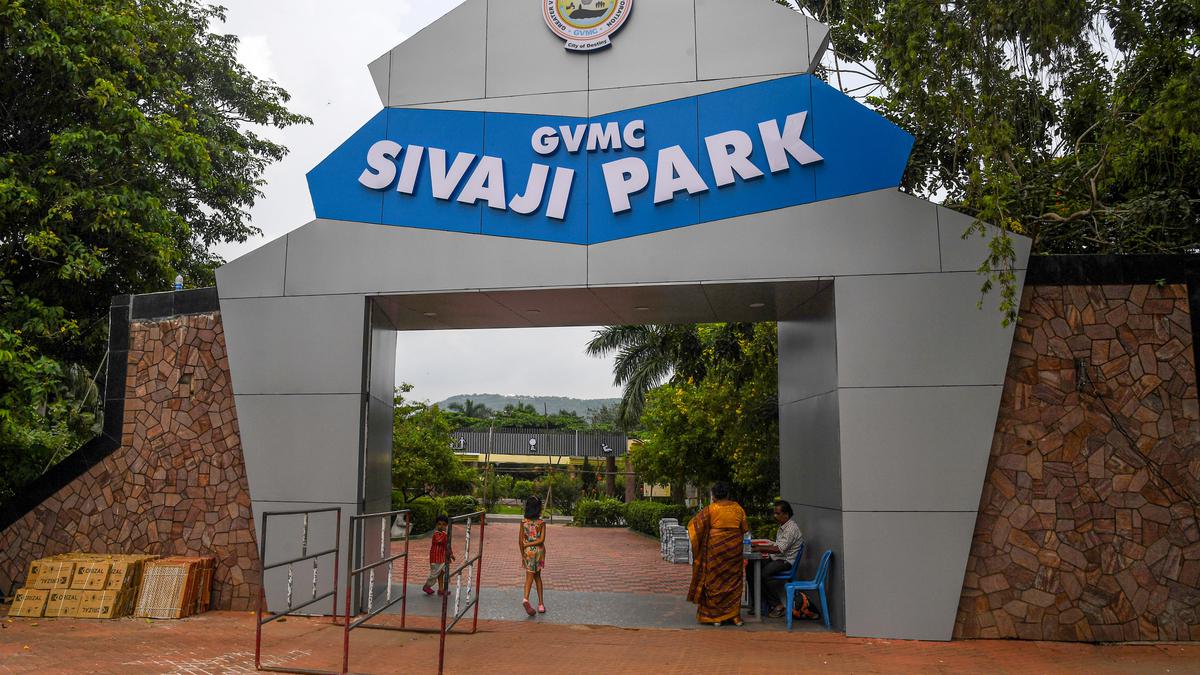
Shivaji Park in Visakhaptnam all set to get a new look as GVMC undertakes development work at ₹2 crore
The Hindu
About 40% of the project has been completed and it may take another month to finish the pending work, says GVMC Superintending Engineer (Public Works) Satyanarayana Raju
Decades-old Shivaji Park in MVP Colony is all set to get a new look as the Greater Visakhapatnam Municipal Corporation (GVMC) has started modernisation work with a budget of 2 crore to meet the requirements of the visitors.
The walking track, play equipment, toilets, amphitheatre, shelters and even the drinking water facility at the park have been damaged and negligence in the upkeep of the facilities over the years is said to be the reason. Walkers and residential welfare associations frequently complain about poor sanitation at the park.
The skating rink needs repairs while the water fountain, the major attraction of the park, is not in good shape. Taking note of the issues, the GVMC started the development works at the park in June and the budget for the facelift work has been estimated to be ₹2 crore.
“The look of the central plaza has been changed. The bottom flooring was damaged and new tiles have been laid. The entrance arch has been designed with aluminium composite panel cladding. The fountain, which had been defunct for years, has been renovated. The Open Air Theatre (OAT) has also been renovated, while the walking tracks are also being developed,” said GVMC Superintending Engineer (Public Works) Satyanarayana Raju.
He said that three new modern toilets would be built in the park, while the canteen has been renovated. A focus is being laid over greenery and landscape development.
“About 40% of the works have been already completed. It may take another month to finish the pending works,” said Mr. Satyanarayana Raju.

“Writing, in general, is a very solitary process,” says Yauvanika Chopra, Associate Director at The New India Foundation (NIF), which, earlier this year, announced the 12th edition of its NIF Book Fellowships for research and scholarship about Indian history after Independence. While authors, in general, are built for it, it can still get very lonely, says Chopra, pointing out that the fellowship’s community support is as valuable as the monetary benefits it offers. “There is a solid community of NIF fellows, trustees, language experts, jury members, all of whom are incredibly competent,” she says. “They really help make authors feel supported from manuscript to publication, so you never feel like you’re struggling through isolation.”

Several principals of government and private schools in Delhi on Tuesday said the Directorate of Education (DoE) circular from a day earlier, directing schools to conduct classes in ‘hybrid’ mode, had caused confusion regarding day-to-day operations as they did not know how many students would return to school from Wednesday and how would teachers instruct in two modes — online and in person — at once. The DoE circular on Monday had also stated that the option to “exercise online mode of education, wherever available, shall vest with the students and their guardians”. Several schoolteachers also expressed confusion regarding the DoE order. A government schoolteacher said he was unsure of how to cope with the resumption of physical classes, given that the order directing government offices to ensure that 50% of the employees work from home is still in place. On Monday, the Commission for Air Quality Management in the National Capital Region and Adjoining Areas (CAQM) had, on the orders of the Supreme Court, directed schools in Delhi-NCR to shift classes to the hybrid mode, following which the DoE had issued the circular. The court had urged the Centre’s pollution watchdog to consider restarting physical classes due to many students missing out on the mid-day meals and lacking the necessary means to attend classes online. The CAQM had, on November 20, asked schools in Delhi-NCR to shift to the online mode of teaching.









